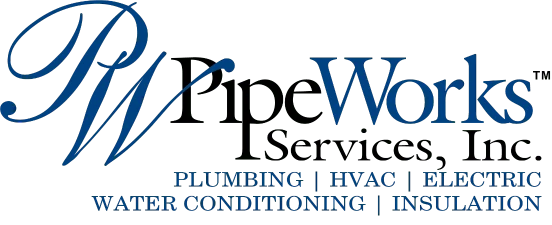If you own a home in Chatham, NJ, you should know our area has persistently high humidity. We experience 66.35% average relative humidity, some months peaking well above that. Dampness is so common here that it’s easy to overlook its effects on your home. You may want a whole-home dehumidifier installed to maintain your home’s humidity appropriately. Here, we’ll cover eight reasons why you should.
Why Does Indoor Humidity Matter?
Although you may not realize it, your home’s indoor humidity is critical to its air quality. It can affect your comfort, your health, and your home’s energy efficiency. It can also affect the longevity of your furniture and belongings. Excess moisture may also damage your home if you don’t get it under control.
What Is the Right Indoor Humidity Level?
Most experts will tell you that the ideal indoor humidity level is between 30% and 50%. However, the right level for your home will vary by season. Generally, depending on the temperature, you’ll want your home to stay in the following ranges.
- Maximum 50% humidity at temperatures of 50° Fahrenheit or higher
- Maximum 40% humidity between 20° and 49°
- Maximum 35% humidity between 10° and 19°
- Maximum 30% humidity between 0° and 9°
Reasons to Install a Whole-Home Dehumidifier
Although it’s possible to control moisture in your home using portable dehumidifiers, a whole-home model is a better option. Here are eight reasons to install one.
1. More Effective and Efficient Than Portable Dehumidifiers
At most, a large portable dehumidifier can remove about 50 pints of water from the air around it daily. You may find a portable unit struggling to keep up with our area’s peak humidity. As they run, portable units typically collect condensation in a container. Then, you must empty the container for the dehumidifier to keep working. Some models let you use an attached drainage hose instead. By contrast, a whole-home model can remove 98 or more pints daily. It also features a permanent drain, so you don’t have to empty anything. Plus, a whole-home dehumidifier can be up to four times as energy efficient as a portable unit. That makes them significantly cheaper to operate over the long term.
2. Increased Comfort
When you go outside on a hot, humid day, you’ll notice that it seems impossible to feel comfortable. High humidity directly interferes with your body’s ability to cool itself. Our bodies depend on evaporative cooling, releasing sweat and counting on it evaporating to carry heat away. Humid air prevents your sweat from evaporating because it’s already saturated.
Additionally, humid air can cause breathing difficulties. When you inhale humid air, it can cause your airways to constrict. That decreases your lungs’ ability to absorb oxygen. In healthy people, the net effect is discomfort. If you suffer from respiratory problems like asthma or COPD, the effects can be more severe. A whole-home dehumidifier keeps your indoor humidity levels in a safe range to avoid those problems.
3. Increased HVAC Efficiency
When your AC runs, it pushes hot air from your home across a condenser coil filled with cold refrigerant. As the air passes, it transfers heat into the refrigerant, which carries it outside. In the process, the moisture in your home’s air condenses back to water droplets. Those droplets drain through a condensate line. However, humid air, by nature, holds more heat energy. That means it’ll require more trips through your AC to cool down. Plus, the dehumidification effects of a central air conditioner have limits. The result is a far higher workload for your system. Adding a dehumidifier to the mix reduces the burden on your AC, helping it work more efficiently. It also reduces unnecessary HVAC wear and tear.
4. Reduces Mold Growth Potential
Mold is a type of structure formed by various species of fungi. Mold types generally fit into three categories: allergenic, pathogenic, and toxigenic. None of them are healthy to inhale. Unfortunately, excessively moist air can supercharge mold growth. Mold thrives in damp, dark places, including inside your ductwork and HVAC. When those conditions persist, it can quickly lead to unhealthy air in your home. A whole-home dehumidifier lowers your home’s humidity independently of your HVAC system. Then, your HVAC will draw in drier air, suppressing mold growth inside your ducts and indoor unit.
5. Eliminates Musty Odors
Another unpleasant side effect of a damp home is the presence of musty odors. Moist air can lead to musty smells by keeping carpets wet and even saturating your walls and furniture upholstery. Such odors are impossible to suppress or eliminate without dealing with the moisture that causes them. A whole-home dehumidifier handles that for you by keeping your home’s air appropriately dry. That dries out permeable materials, removing the offending odors.
6. Reduces Allergy Symptoms
A whole-home dehumidifier is also a valuable tool for allergy sufferers in Chatham. Besides mold, various allergens love moisture and thrive in it. Dust mites, for example, cannot drink water; instead, they absorb it from the air. Allowing your home to remain humid will help dust mites live and reproduce. Cockroaches and other pests also love damp conditions. They produce allergens that provoke reactions in humans, as well.
7. Prevents Window Condensation
If your home’s windows and glass surfaces have frequent condensation buildup, it’s too humid. It happens when your glass cools enough to reach the dew point. The higher the moisture levels in your air, the higher the dew point. That leaves you with only two solutions to the problem. You can turn up your thermostat to an uncomfortable level or use a dehumidifier. The latter option preserves your comfort at minimal expense, especially when you use a whole-home solution.
8. Prevents Water Staining
Finally, a whole-home dehumidifier can prevent the appearance of water staining on your walls and ceilings. Most homeowners realize a leaking roof or drain can cause yellow stains on affected surfaces. Not everyone realizes that high humidity can cause similar effects. Most homes have walls and ceilings clad in drywall. It’s a highly absorbent material that readily extracts water from the air. As it does, it may develop staining that mimics the results of a leak. Damp drywall also swells and then contracts as it dries. That can cause paint to crack, bubble, or flake.
Your Source for Indoor Air Quality Solutions
Since 2000, Pipe Works Services has offered affordable indoor air quality solutions to homeowners in Chatham. That includes the latest in quality whole-home dehumidifiers. But we also offer a wide range of other home services. We handle HVAC, plumbing, electrical, and insulation work. We also provide home energy audits, combining those services to improve your home’s efficiency.
Our team can also assist you with navigating federal, state, and energy provider rebate programs. And when you’re planning an extensive home upgrade, we provide financing options on approved credit. Our HVAC technicians have NATE certifications, and we’re a member of the ACCA. We even have an A+ rating from the BBB. So, if your home needs a whole-home dehumidifier, call Pipe Works Services today.





